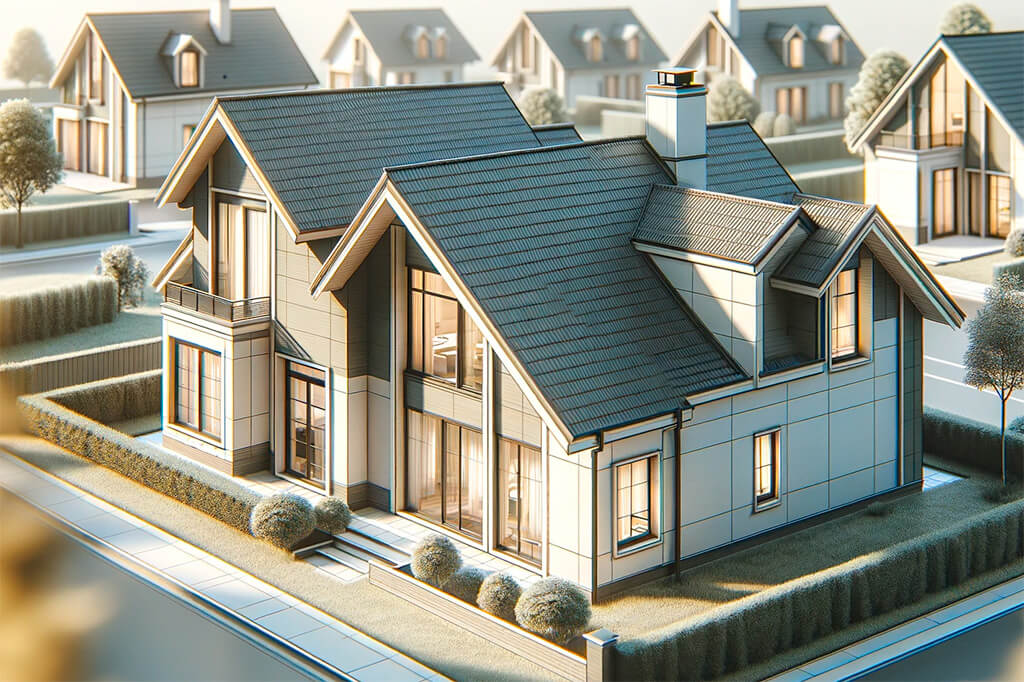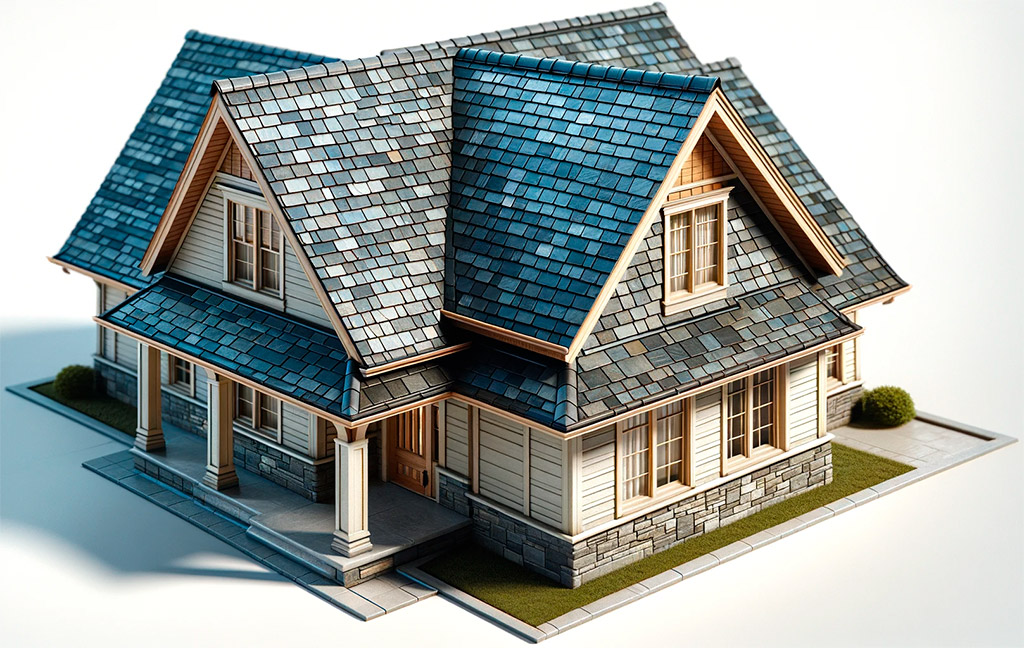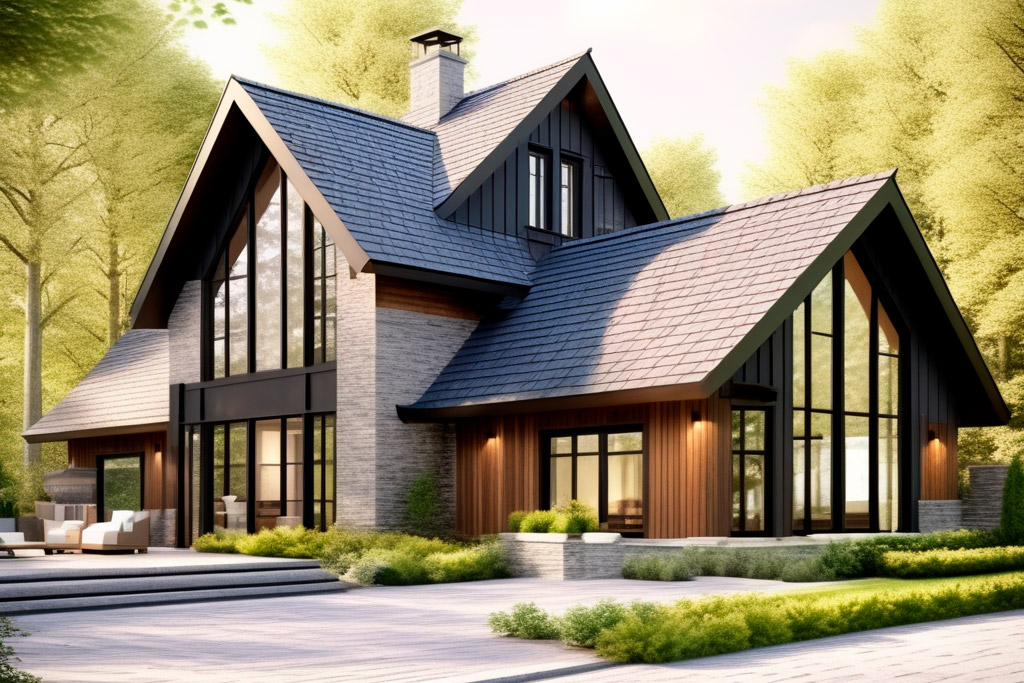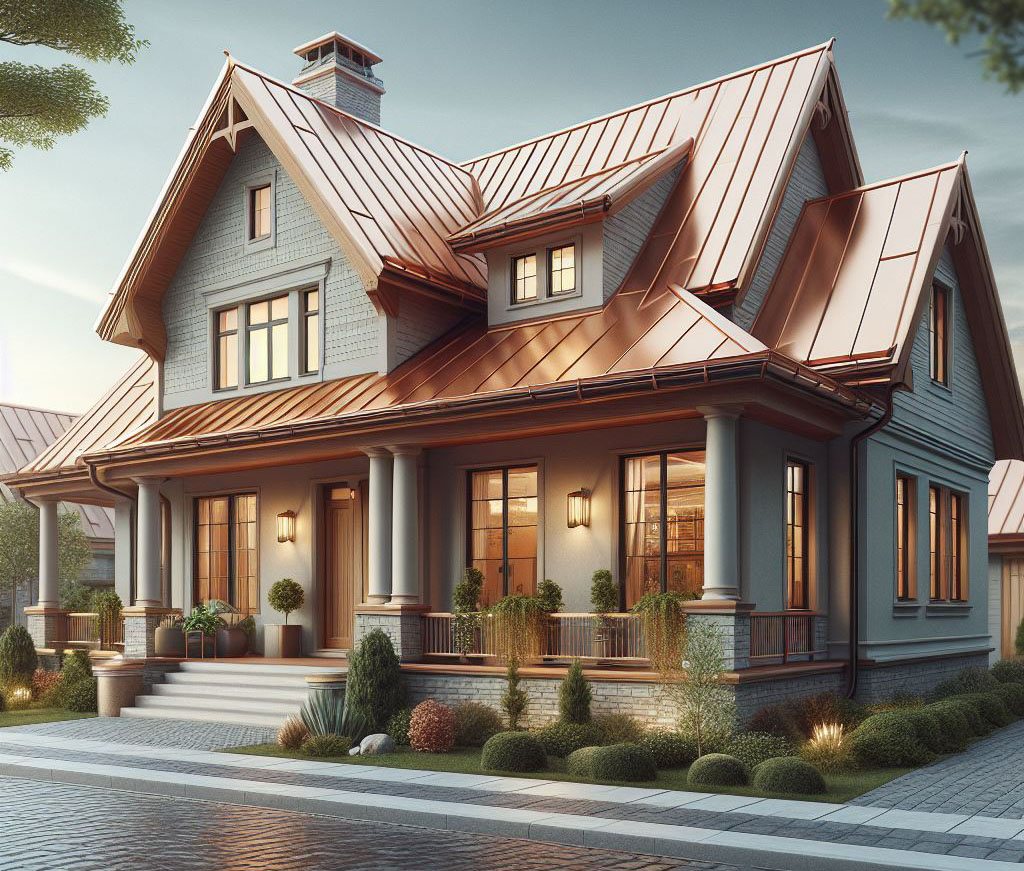When it comes to choosing the right type of roof, think of it as not just a cosmetic upgrade but a vital investment in your home’s future. A roof does more than keep the rain off, it shapes your home’s character, defends against the elements, and even impacts your energy bill. For those of us who thrive on DIY challenges or make a living from crafting homes, understanding the ins and outs of roofing is as essential as the foundation your house sits on. A well-chosen roof is a blend of durability, beauty, and energy efficiency, crafted to meet the demands of your specific environment and aesthetic preferences.

Key Factors to Consider When Choosing a Roof
- Climate Adaptability.
Every region throws its own curveballs when it comes to weather. The right roof is your heavyweight champ against whatever the skies open up, be it a torrential downpour, a blanket of snow, or the relentless sun. A sloped roof might shed snow like a pro, while metal cladding could stand up to high winds without flinching. Choosing a material that suits your climate not only prolongs the life of your roof but also protects your home more effectively. - Material Longevity.
Roofing materials are not created equal. Some, like asphalt shingles, offer a shorter lifespan but come with a lower cost. Others, such as metal or tile, demand a higher initial investment but age gracefully over decades with minimal care. It’s crucial to weigh the expected lifespan against the cost, considering not just the years it will last but the peace of mind it will offer. - Maintenance Requirements.
Consider how much time and effort you’re willing to invest in upkeep. Metal roofs might need little more than an occasional checkup, whereas wood shingles require a vigilant eye to ward off rot and pest infestation. Opt for a material that fits your lifestyle and maintenance capacity. - Energy Efficiency.
A smartly chosen roof does more than shelter, it can significantly cut your heating and cooling costs. Materials that reflect sunlight and offer better insulation keep your home cooler in the summer and warmer in the winter. The right choice here can mean substantial savings on energy bills and a more comfortable living environment. - Aesthetic Appeal.
The roof contributes significantly to your home’s overall look. Match its style with the architectural design of your house for a cohesive aesthetic. Whether you’re aiming for the timeless elegance of slate on a colonial revival or the sleek edge of metal on a modern minimalist structure, the right roofing material can accentuate your home’s architectural lines and colors. - Cost: Initial Investment vs. Long-Term Benefits.
It’s tempting to opt for the least expensive option upfront, but the true cost of a roof includes its maintenance, energy efficiency, and lifespan. A pricier option now may save you a bundle in repairs, replacements, and utility bills down the road. Assessing the long-term implications of your roofing choice can lead to smarter, more cost-effective decisions.

Popular Roofing Materials and Styles
Asphalt Shingles. The quintessential choice for roofing, asphalt shingles are celebrated for their cost-effectiveness and versatility. They adapt gracefully to a range of architectural styles, offering an array of colors and textures. Practical in their application, they require periodic inspection, especially post-storm, to ensure their integrity. Their ubiquity speaks to their reliability, yet their lifespan is shorter compared to more durable materials.
Metal Roofing. Esteemed for its resilience, metal roofing stands as a bulwark against the elements, from torrential rains to scorching sunrays, reflecting heat with aplomb and reducing cooling costs. This material demands a higher investment and skilled installation but repays with minimal maintenance and a lifespan that stretches into decades, making it a prudent choice for the long-term homeowner.
Clay and Concrete Tiles. With their roots in ancient architecture, clay and concrete tiles bestow a timeless aesthetic, especially suited to homes basking in warmer climes. Their weight is considerable, necessitating a robust structural foundation. Once surmounted, their installation provides formidable resistance to the elements, embodying durability with elegance.
Slate Roofing. Slate roofing is the paragon of beauty and longevity in the roofing realm. Each slate tile is a slice of natural elegance, promising a century of shelter with minimal maintenance. The initial cost and the complexity of installation are significant, yet the enduring beauty and unmatched durability offer a compelling return on investment.
Wooden Shakes and Shingles. For those seeking a touch of organic charm, wooden shakes and shingles offer a direct connection to nature’s warmth, enhancing a home’s insulation naturally. This choice carries with it a commitment to maintenance, protecting against the incursions of moisture, decay, and pests to preserve its natural beauty and functionality.
Green Roofs. The innovation of green roofing brings a living, breathing component to your home’s canopy. Beyond their aesthetic appeal, they contribute significantly to insulation, air quality improvement, and stormwater management. The structural requirements and maintenance commitment are higher, but the environmental benefits and energy efficiency savings make green roofs a compelling choice for the eco-conscious homeowner.

Pros and Cons of Each Roof Type
Navigating through these options requires a balance of considerations—cost, durability, maintenance, and aesthetic appeal.
- Asphalt Shingles offer an economical and versatile roofing solution, yet may fall short in lifespan and durability under extreme conditions.
- Metal Roofing is a bastion of durability and energy efficiency, with an upfront cost offset by long-term savings and minimal upkeep.
- Clay and Concrete Tiles provide timeless beauty and robust protection, demanding structural integrity and a higher installation investment.
- Slate Roofing offers unparalleled longevity and natural elegance, with considerations for cost and structural support.
- Wooden Shakes and Shingles bring rustic charm and natural insulation but require diligent maintenance to ward off environmental wear.
- Green Roofs elevate a home’s environmental footprint and efficiency, with a mindful approach to structural support and care.

Installation and Maintenance Tips
Installation Techniques for the DIY Handyman
- Asphalt Shingles. Begin with a solid foundation, ensuring the roof deck is clean and intact. Roll out the underlayment as your first line of defense against water infiltration. When installing shingles, adopt a systematic approach, starting from the bottom edge of the roof and working your way up, ensuring each row overlaps the one below it to create a water-resistant barrier. Pay close attention to the manufacturer’s instructions for nailing patterns to prevent future leaks.
- Metal Roofing. Accuracy in measurement and cutting cannot be overstated. A metal roof’s effectiveness is largely dependent on the precision of its installation. Use fasteners with neoprene washers to seal screw holes and prevent leaks. Overlapping panels should be oriented so that they are least likely to catch wind and rain, a critical consideration in maintaining their integrity over time.
- Tiles and Slate. The sheer weight of these materials requires a strong structural support system. Installing battens can aid in achieving uniform spacing and alignment. It’s important to tread lightly during installation to avoid damage—not just to the tiles but to the installer as well.

Maintenance Advice
- Asphalt Shingles. Regular inspections can catch minor issues before they escalate. Look for signs of wear such as cracking, curling, or missing shingles, particularly after severe weather events.
- Metal Roofing. Keep an eye out for any loose screws or signs of rust. Regular cleaning of gutters and downspouts is essential to prevent water damage.
- Tiles and Slate. Inspect for cracked, broken, or dislodged tiles, which can compromise the roof’s integrity. Exercise caution when walking on the roof for any repairs.
- Wooden Shakes. These require vigilant maintenance to prevent moss, rot, and insect damage. A periodic application of preservative can extend their life.
- Green Roofs. Beyond the aesthetic and environmental benefits, green roofs demand maintenance of the vegetation and inspection of the waterproof layer to ensure the roof’s performance.
Innovative Roofing Trends
The roofing industry is on the cusp of a revolution, with sustainability and efficiency at its heart.
- Solar Tiles. Blending seamlessly with traditional roofing materials, solar tiles offer a dual-purpose solution, protecting your home while generating electricity. This innovation is a game-changer for homeowners interested in reducing their carbon footprint without compromising on style.
- cool roofs. Engineered to reflect more sunlight and absorb less heat, cool roofs are a simple yet effective way to reduce air conditioning needs, thereby lowering energy bills.
- Sustainable Materials. The push towards eco-friendly materials has introduced options like recycled plastic and rubber shingles, offering durability and a lower environmental impact. Green roofs, with their vegetation layers, not only enhance a building’s insulation but also contribute to urban biodiversity.
FAQ Section
While asphalt shingles stand out for their initial affordability, metal roofs may offer greater cost efficiency over time due to their longer lifespan and minimal maintenance requirements.
It’s possible, provided the structure can support the additional weight and the existing roof is in good condition. This approach can save on removal and disposal costs, but it’s crucial to consult local building codes and possibly a structural engineer.
A bi-annual inspection, in spring and fall, can help catch potential issues early. It’s also wise to inspect after any extreme weather event.
Look for roofing materials specifically rated for high wind resistance, such as certain metal roofs and asphalt shingles designed for extreme weather.
By providing natural insulation and reducing heat absorption, green roofs can significantly lower heating and cooling costs, making them a smart choice for energy-conscious homeowners.
Materials susceptible to water absorption or that can become brittle in cold temperatures, such as some types of tiles, may not perform well in freezing conditions.
An asphalt shingle roof may last between 20-30 years, whereas a metal roof can protect your home for 50 years or more, depending on maintenance and environmental conditions.
